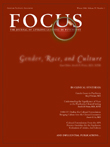Diagnostic Criteria for Complicated Grief Disorder
Abstract
Objective: Some prolonged and turbulent grief reactions include symptoms that differ from the DSM-IV criteria for major depressive disorder. The authors investigated a new diagnosis that would include these symptoms. Method: They developed observer-based definitions of 30 symptoms noted clinically in previous longitudinal interviews of bereaved persons and then designed a plan to investigate whether any combination of these would serve as criteria for a possible new diagnosis of complicated grief disorder. Using a structured diagnostic interview, they assessed 70 subjects whose spouses had died. Latent class model analyses and signal detection procedures were used to calibrate the data against global clinical ratings and self-report measures of grief-specific distress. Results: Complicated grief disorder was found to be characterized by a smaller set of the assessed symptoms. Subjects selected by an algorithm for these symptom patterns did not significantly overlap with subjects who received a diagnosis of major depressive disorder. Conclusions: A new diagnosis of complicated grief disorder may be indicated. Its criteria would include the current experience (more than a year after a loss) of intense intrusive thoughts, pangs of severe emotion, distressing yearnings, feeling excessively alone and empty, excessively avoiding tasks reminiscent of the deceased, unusual sleep disturbances, and maladaptive levels of loss of interest in personal activities.



